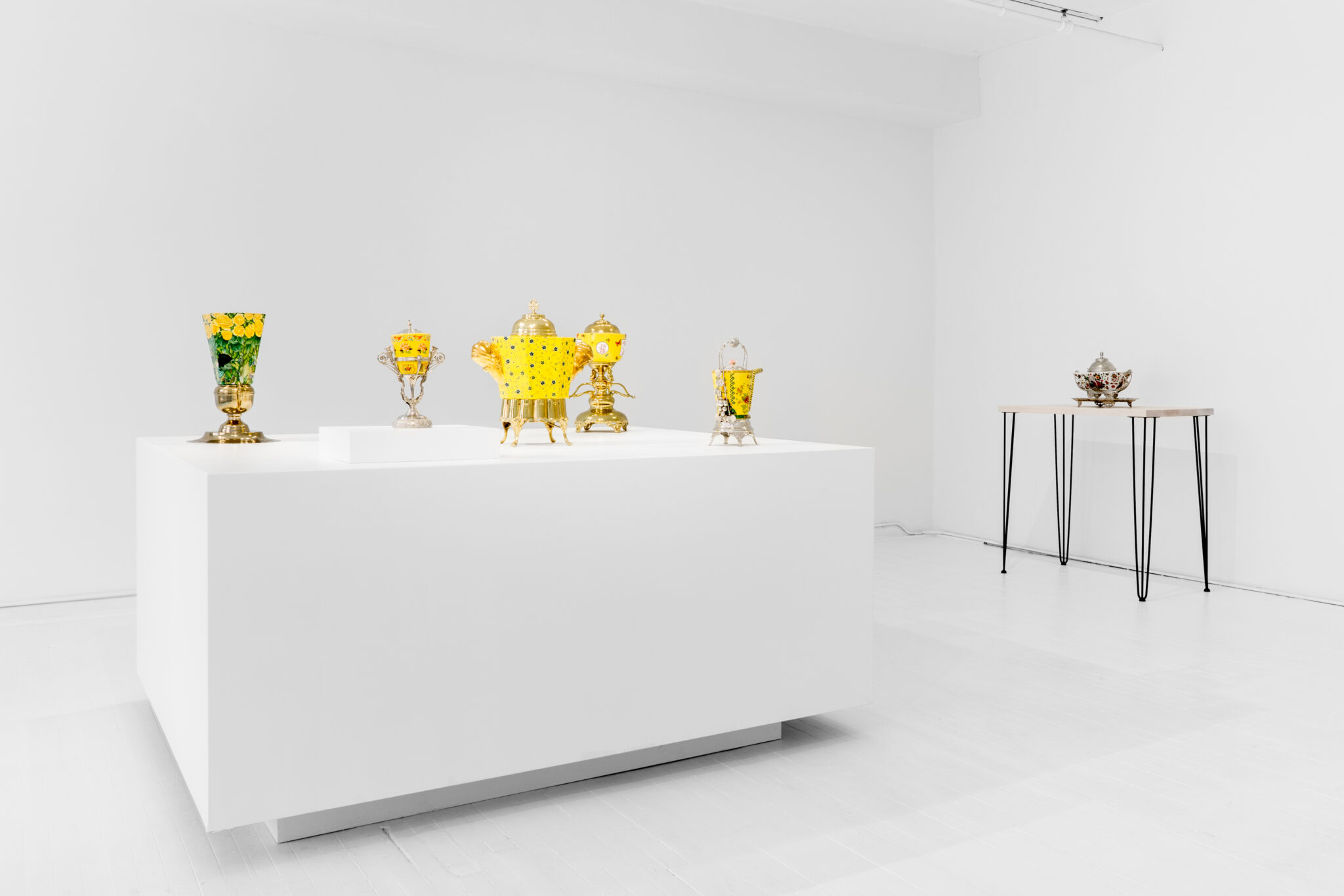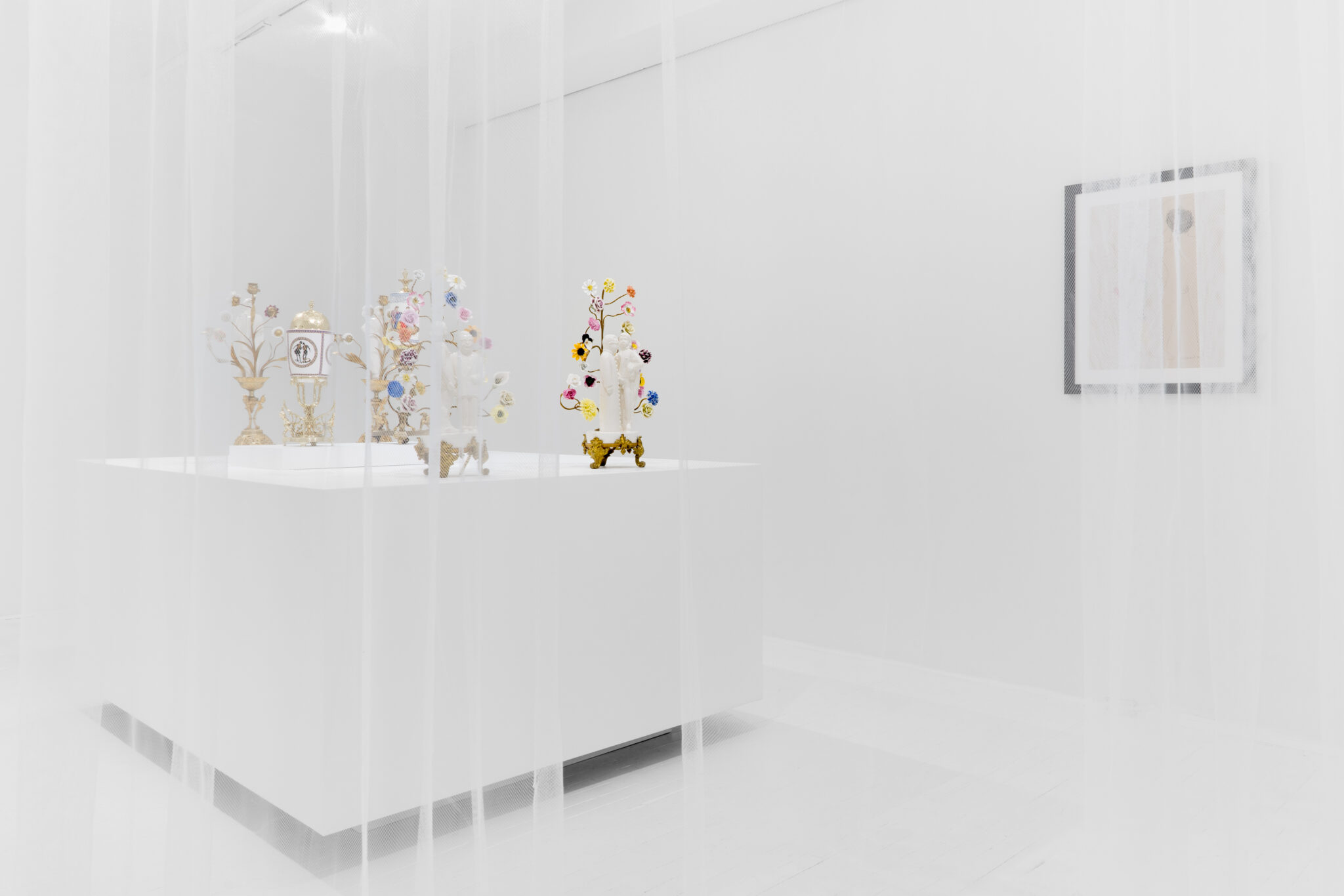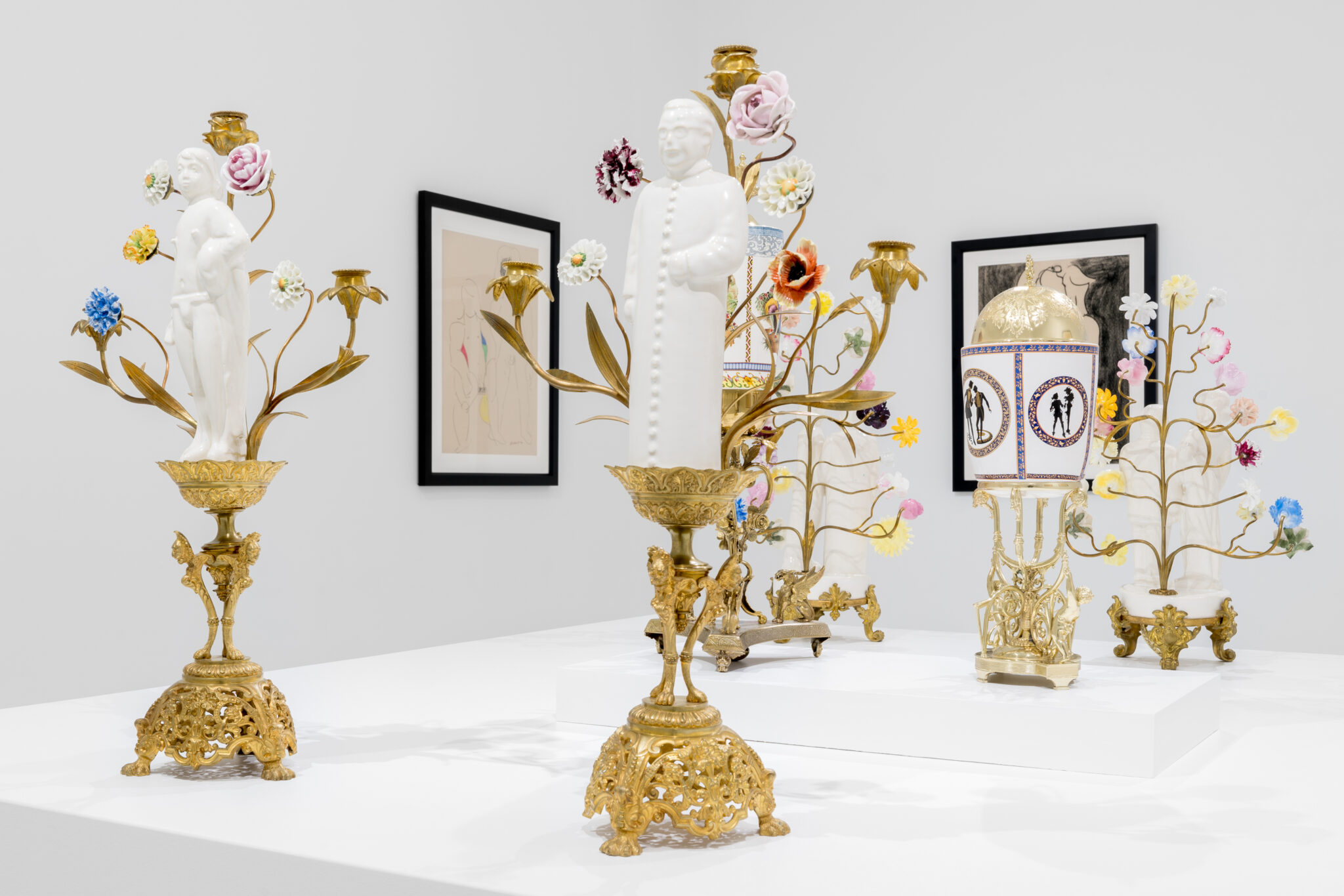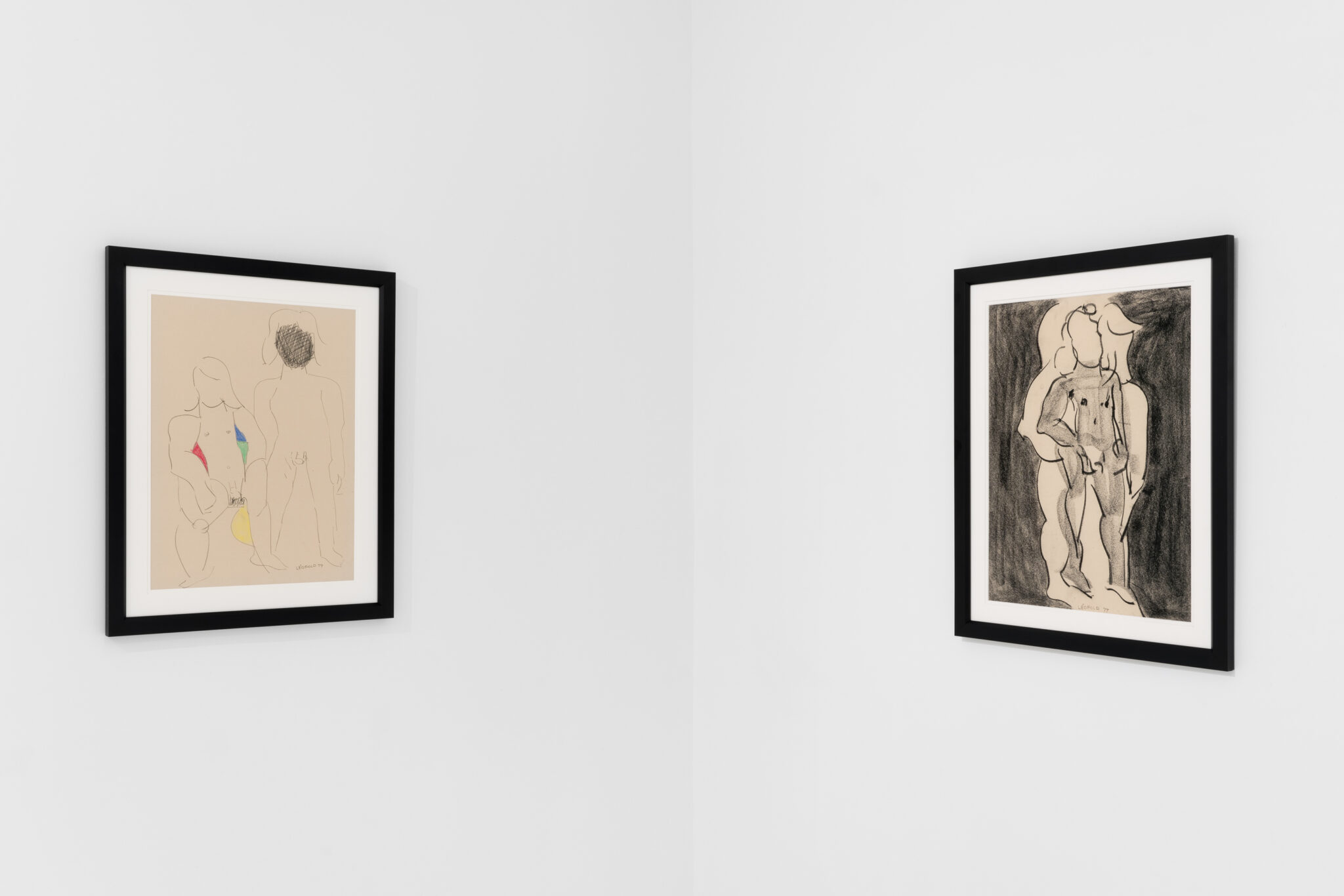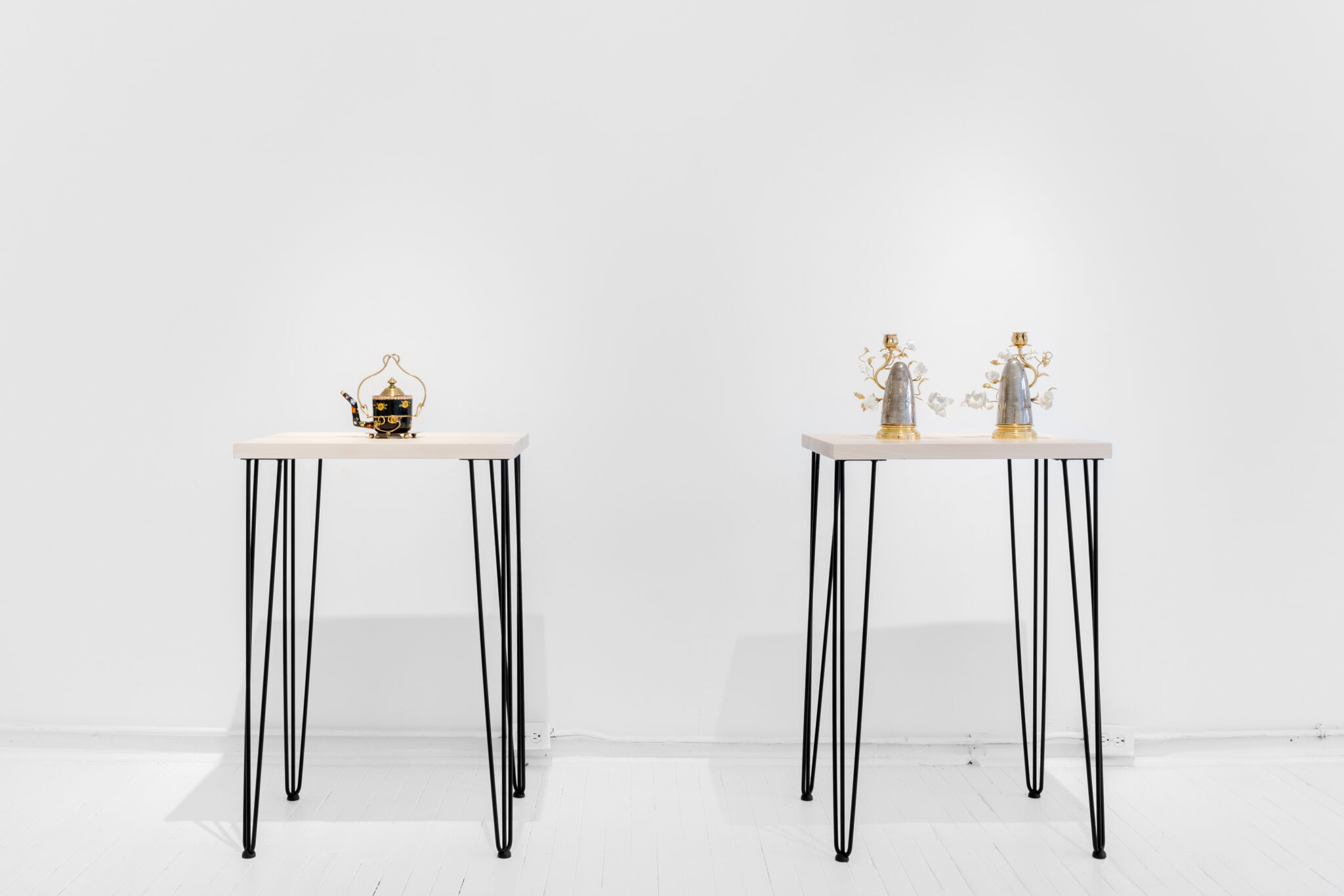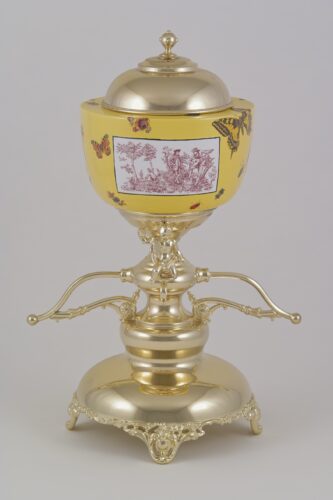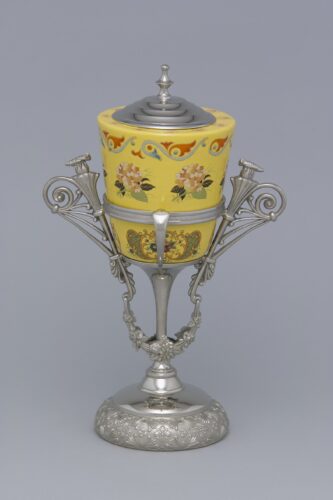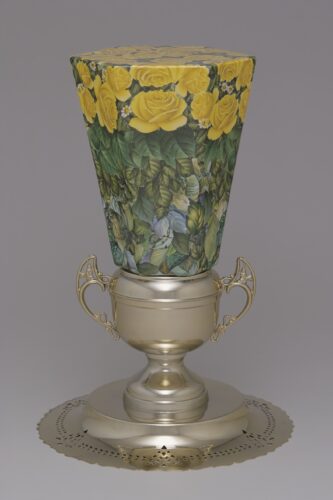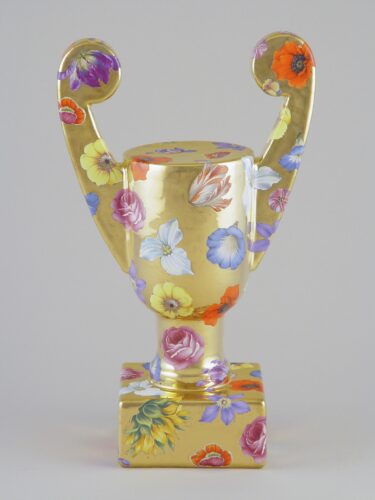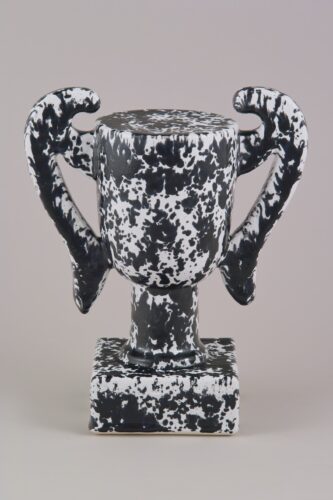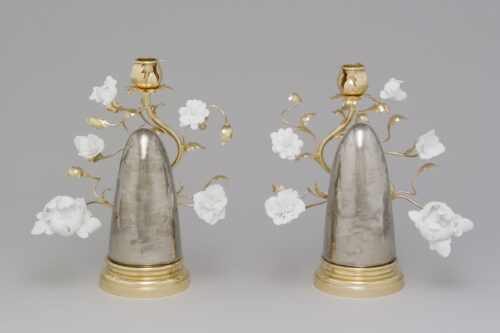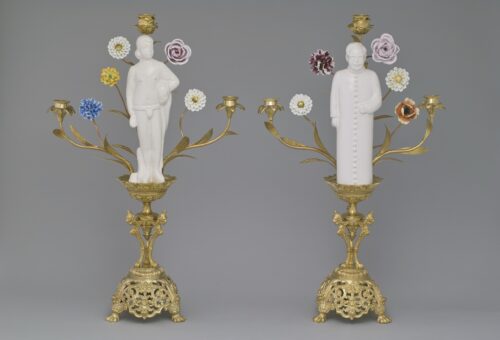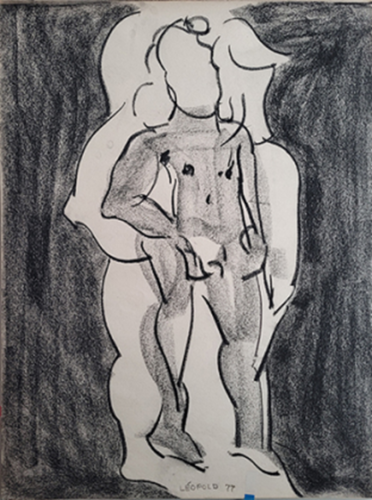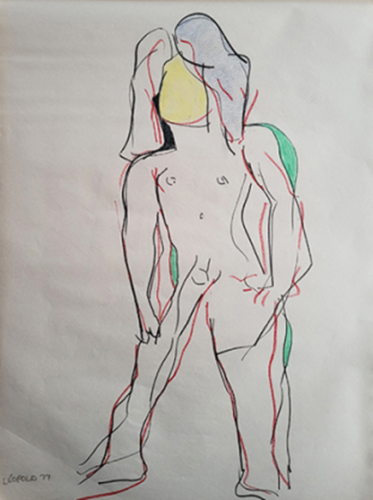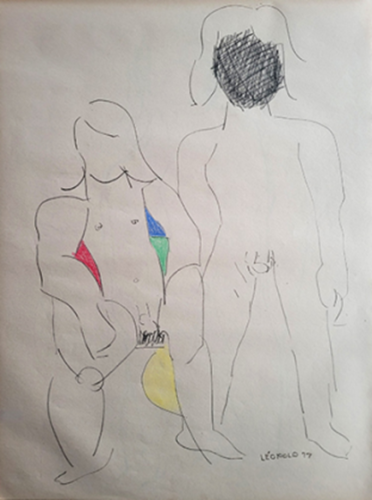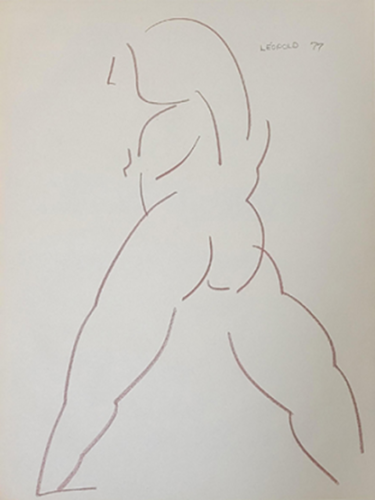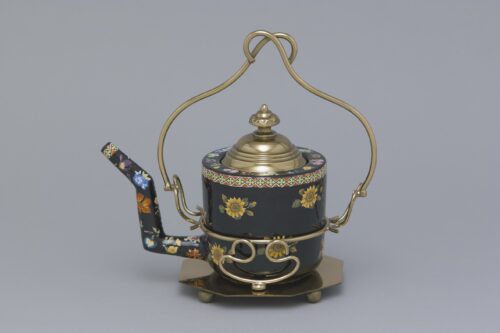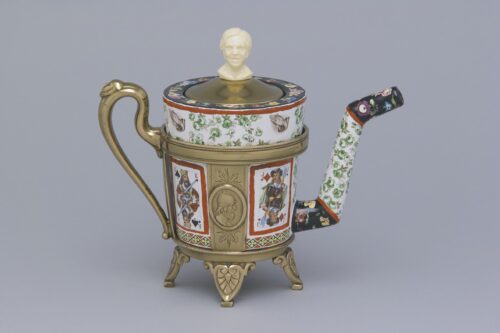Pioneer of conceptual ceramics, Léopold L. Foulem devoted nearly fifty years to exploring and creating works of art. Guided by formal research that seeks to blur the boundaries between fine art and craft, his works are not narrative but rather referential, drawing upon the history of the medium they evoke. Drawing inspiration from the visual lexicon of Chinese, French, and American ceramics, L. Foulem challenges the established conventions of the medium, contributing to the deconstruction of its associated stereotypes. Through his work, the artist questions our relationship to objects and material culture, while reexamining hierarchies between genres and the very notion of “good taste.”
Working with found objects, L. Foulem redefines their original function to create new meanings, playing with the historical and visual language of ceramics. Unlike 18th-century mounted porcelains—imported from China to Europe, then transformed and set into bronze mounts commissioned by Parisian merchants—L. Foulem’s works are conceived to embrace the shapes of the found objects themselves. The bases and mounts thus become integral parts of his compositions, framing and structuring the dimensions of his ceramics. Stripped of their utilitarian purpose, these objects reveal a profusion of references to folklore and queer culture. Santa Claus, the Royal Canadian Mounted Police, Colonel Sanders, and many other figures populate the ceramist’s visual language.
This exhibition celebrates the extensive career of Léopold L. Foulem, whose works are held in the collections of prestigious institutions around the world, attesting to the significance of his artistic practice. Deceased in 2023 (1945–2023), this exhibition pays tribute to one of the leading figures in Quebec ceramics.
Famille jaune
Famille jaune comprises five works whose surfaces reference historical ceramic traditions, particularly the use of yellow in Chinese porcelain. Unlike the overglaze enamels historically used in China, L. Foulem applies a yellow glaze over which he layers decals, enamels, or metallic lusters that reveal vivid colors after successive firings. Far from being mere reproductions, this series encompasses works with mnemonic surfaces that evoke, among others, Meissen porcelain, where yellow was a favored color.
Vase images
This series of vases plays with the notion of abstraction in ceramics. Deprived of hollowness, the vases lose their functional utility and become flat surfaces—images of ceramic vessels. The negation of function is a recurring concern in L. Foulem’s work. The recognizable outlines of vases transform these objects into abstract artworks. The surfaces themselves nod to the canvases of abstract painters of the second half of the 20th century, such as Jackson Pollock or Larry Poons.
Bocages
Enveloped in meticulously modeled flowers, several figures stand at the center of Rococo-like tableaux. Inspired by the bocages commissioned by Madame de Pompadour or Marie-Antoinette throughout the 18th century—ornamental compositions of porcelain flowers crafted by the so-called fleurettes—this series subverts the classical codes of porcelain by introducing provocative scenes. For instance, Colonel Sanders, the emblematic figure of KFC advertising, appears disguised as a priest attempting to seduce a young boy. Many of L. Foulem’s works subverts religious iconography, blending irreverence, humor, and provocation.
Transfer decorations
Various vessels are combined with handles and mounts sourced by L. Foulem from flea markets. Although they appear to imitate bronze or silver, these elements are in fact made from inexpensive materials assembled around the ceramic forms. The surfaces are adorned with images of the Royal Canadian Mounted Police, animals, fruits, and flowers, applied through the technique of decal transfer. This process allows the artist to combine diverse codes and queer wordplay: fruits, pansies, and cocks. Interwoven with Canadian national symbols and pop culture references—including iconic lines from Mae West—these works exemplify the distinctive iconography that defines L. Foulem’s oeuvre.
Drawings
Although best known for his ceramics, Léopold L. Foulem’s drawings remain relatively unfamiliar to the public. Created during his visual arts studies in the United States in the late 1970s, these sketches already reveal the importance of volume evident in his later work. The contours of the nude bodies he depicted are more pronounced than their pictorial detail—the volume itself becomes the essence of the representation.


